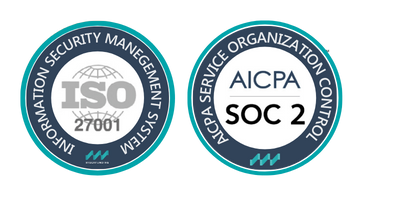In the dynamic and competitive world of leasing, driving sustainable growth requires more than just expanding the lease portfolio—it necessitates a comprehensive approach to risk management that serves as the cornerstone of growth, enabling leasing companies to navigate uncertainties effectively and capitalise on opportunities with confidence. In this blog post, we’ll delve into the critical role of effective risk management in driving growth and profitability for leasing businesses, empowering them to achieve their objectives in today’s dynamic market.
Understanding the importance of risk management
Risk management in leasing encompasses a range of practices aimed at identifying, assessing, and mitigating risks associated with lease agreements. These risks include credit risk, residual value risk, operational risk, and regulatory compliance risk, among others. By implementing effective risk management strategies, leasing companies can minimise the likelihood of financial losses, enhance portfolio performance, and create value for stakeholders.
Strategies for effective risk management
Driving growth through effective risk management requires a proactive approach and a robust risk management framework. Key strategies include:
- Conducting thorough due diligence on lessees to evaluate creditworthiness and assess the likelihood of default. This involves analysing financial statements, assessing payment histories, and understanding industry dynamics to identify potential risks accurately.
- Spreading risk across different industries, geographies, and asset types is essential to minimise concentration risk and enhance portfolio resilience. By diversifying the lease portfolio, leasing companies can mitigate the impact of adverse events in specific sectors or regions and optimise overall portfolio performance.
- Anticipating potential risks and simulating adverse scenarios are crucial steps in effective lease risk management. By conducting scenario analysis and stress testing, leasing companies can evaluate the impact of various market conditions, economic downturns, or industry disruptions on the lease portfolio. This allows them to develop contingency plans and implement risk mitigation strategies proactively.
- Regularly monitoring lessee performance, market dynamics, and regulatory changes is essential to identify emerging risks and opportunities. By staying informed and vigilant, leasing companies can adapt their risk management strategies accordingly, ensuring resilience in the face of evolving market conditions.
- Leveraging advanced technology and data analytics tools can significantly enhance lease risk management capabilities. By harnessing big data, artificial intelligence, and predictive analytics, leasing companies can gain deeper insights into lessee behavior, identify patterns and trends, and make data-driven decisions. This enables them to assess risks more accurately, optimise portfolio performance, and drive growth with confidence.
How Wiserfunding is driving growth
At Wiserfunding, we understand the challenges leasing companies face in managing lease risks while pursuing growth opportunities. Our comprehensive suite of risk intelligence solutions empowers leasing businesses to assess, monitor, and mitigate risks effectively, enabling them to drive growth and maximise profitability. With advanced analytics, predictive modeling, and scenario analysis capabilities, Wiserfunding equips leasing companies with the tools they need to navigate uncertainties with confidence and seize opportunities for growth.
Driving growth through effective lease risk management is essential for leasing companies to thrive in today’s competitive landscape. By adopting proactive risk management strategies and leveraging innovative solutions like Wiserfunding, leasing businesses can achieve their growth objectives while minimising risks and maximising returns.
Get in touch today to see how Wiserfunding can help simplify complicated risk management protocols and offer efficient navigation through the risk landscape, or learn more about our solutions here.
SIMILAR POSTS

23 July 2025
NEITEC and Wiserfunding: A strategic partnership redefining SME access to finance
At Wiserfunding, we are proud to announce our partnership with NEITEC, a platform dedicated to unlocking financing opportunities for [...]

23 July 2025
Harvey Nijjar Discusses Multifi’s Strategy and Partnership with Wiserfunding
Multifi is a UK-based financial platform providing flexible, unsecured credit to small and medium-sized businesses for managing cash flow, [...]

Key Credit Risks From the IMF’s Global Financial Stability Report
Lending Into Fragility: Key Risks From the IMF’s Global Financial Stability Report For lenders navigating deteriorating credit conditions, the IMF’s [...]



